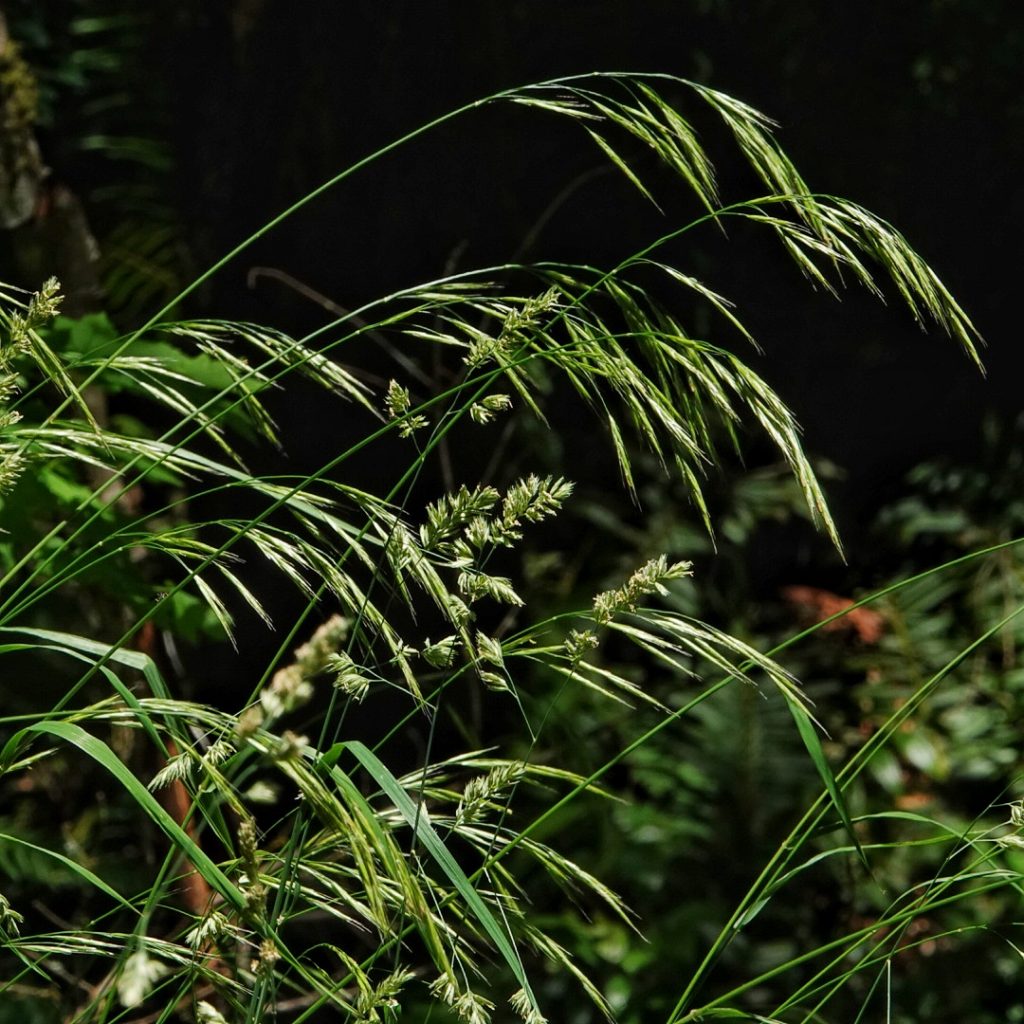
Flush with success after identifying Lolium perenne (perennial ryegrass) I decided to tackle another grass, but I missed badly on this one. Not only did I make the rookie mistake of seeing a photo that looked right and then trying to shoehorn it into the ‘right’ lead in the couplets, but I didn’t read an important couplet very well. And I misjudged whether the leaf sheath was open or closed, calling it open because it didn’t appear to tear as I peeled it from the culm.
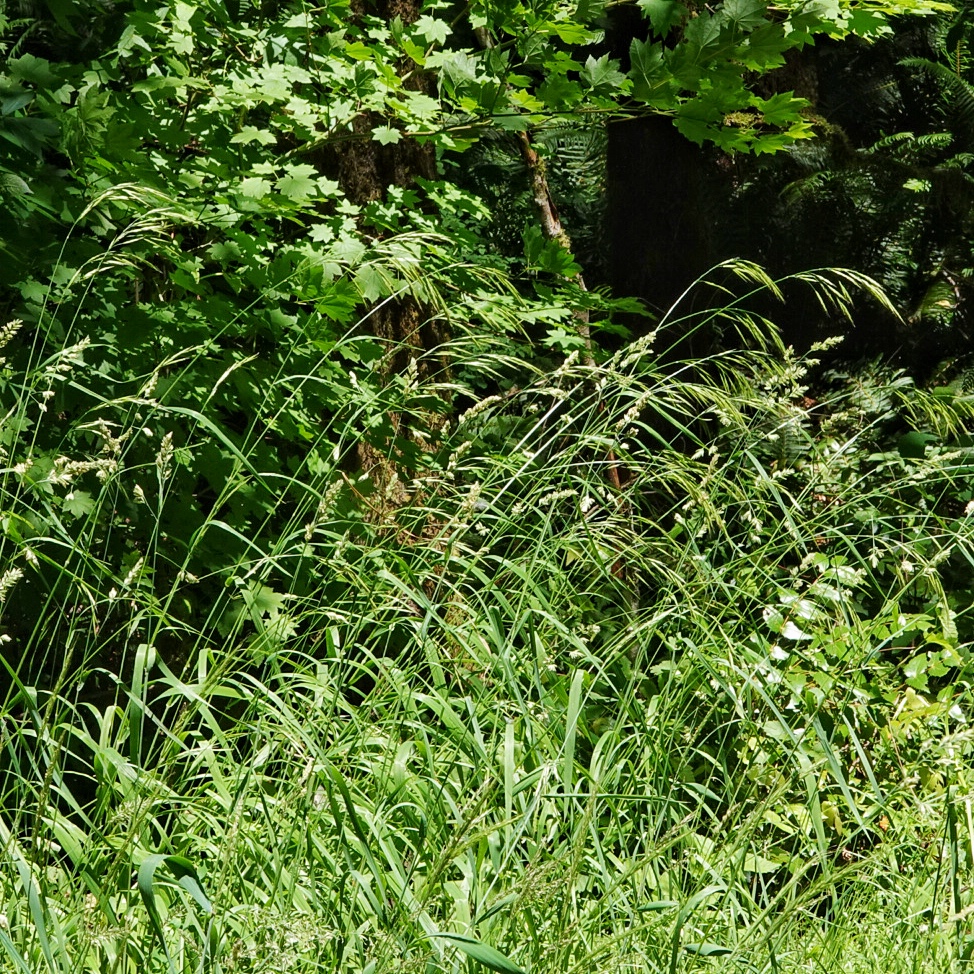
But fortunately I asked Cindy Roché to vet it for me, before I embarrassed myself in public. She told me kindly that I was wrong, and suggested I look at Bromus vulgaris (common name Columbia brome or common brome). This time the round pegs fit nicely in the round holes, and the square pegs slid right into the square holes. I still have much to learn to even be a beginner at this grass identification stuff. But I’m not giving up.
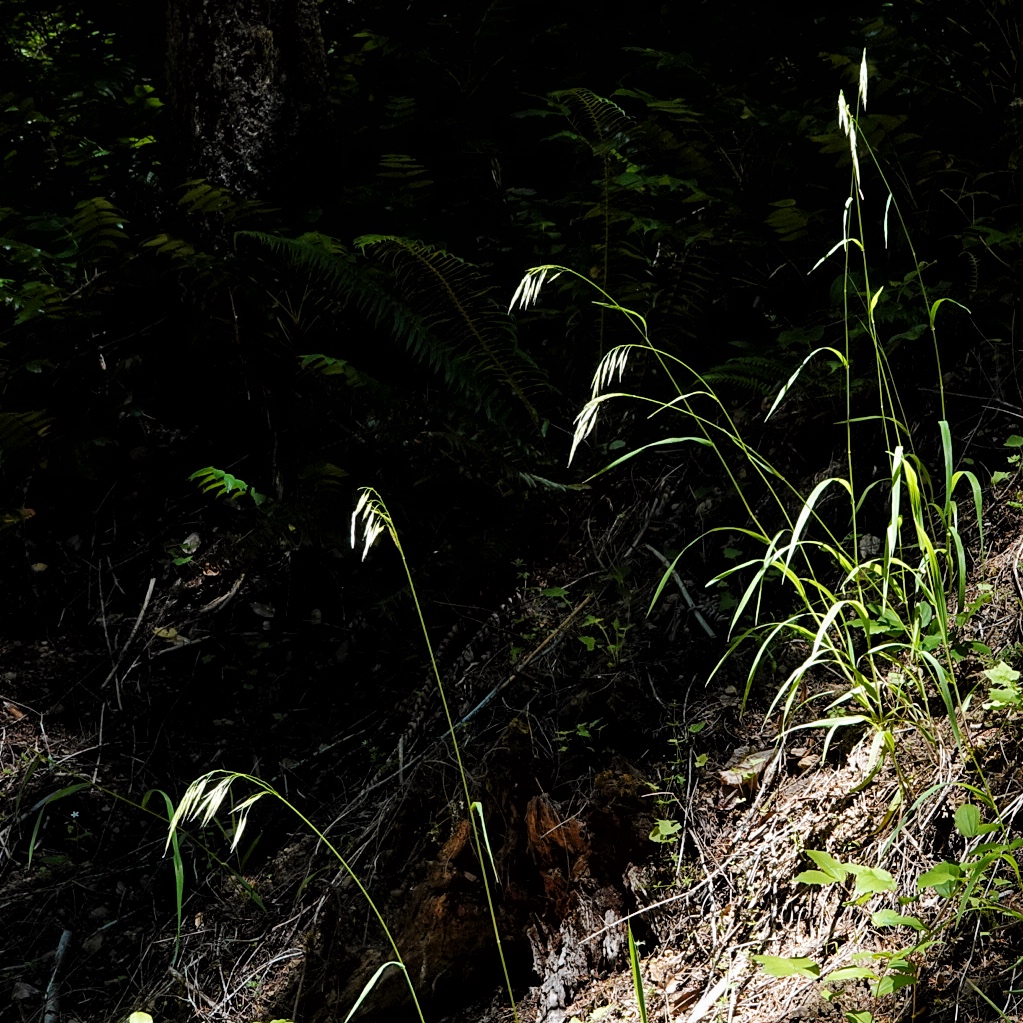
Description-Perennial that forms loose bunches; up to 4’ tall; leaf sheath closed, leaf blades 5-14mm wide, ligules membranous; inflorescence nodding; lemma rounded dorsally, with awns up to 12mm.
Similar species-Other nodding bromes grow near the Coast (B. pacificus), in sw Oregon (B. laevipes) or east of the Cascades (B. ciliatus, which also has noticeably hairy lemma margins); Trisetum cernuum (which is what I tried to make this into), has open leaf sheaths, as does Cinna latifolia.
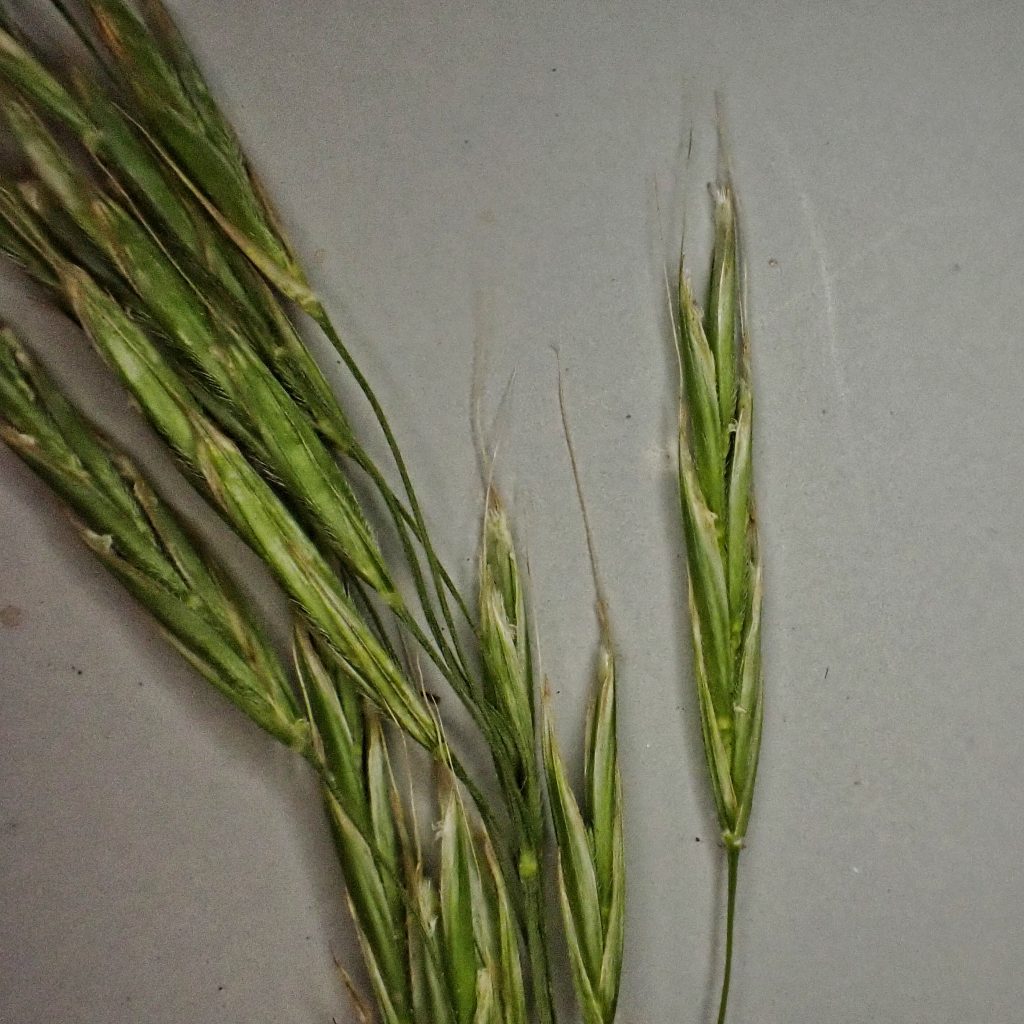
Habitat-Understory plant in partial shade in forested areas, in forest openings, and clearcuts, meadows and disturbed ground.
Range-Native to western North America; found west of the Cascades, and in forested and montane zones on the eastside.
Reproductive timing-Inflorescence forms in late spring and early summer.
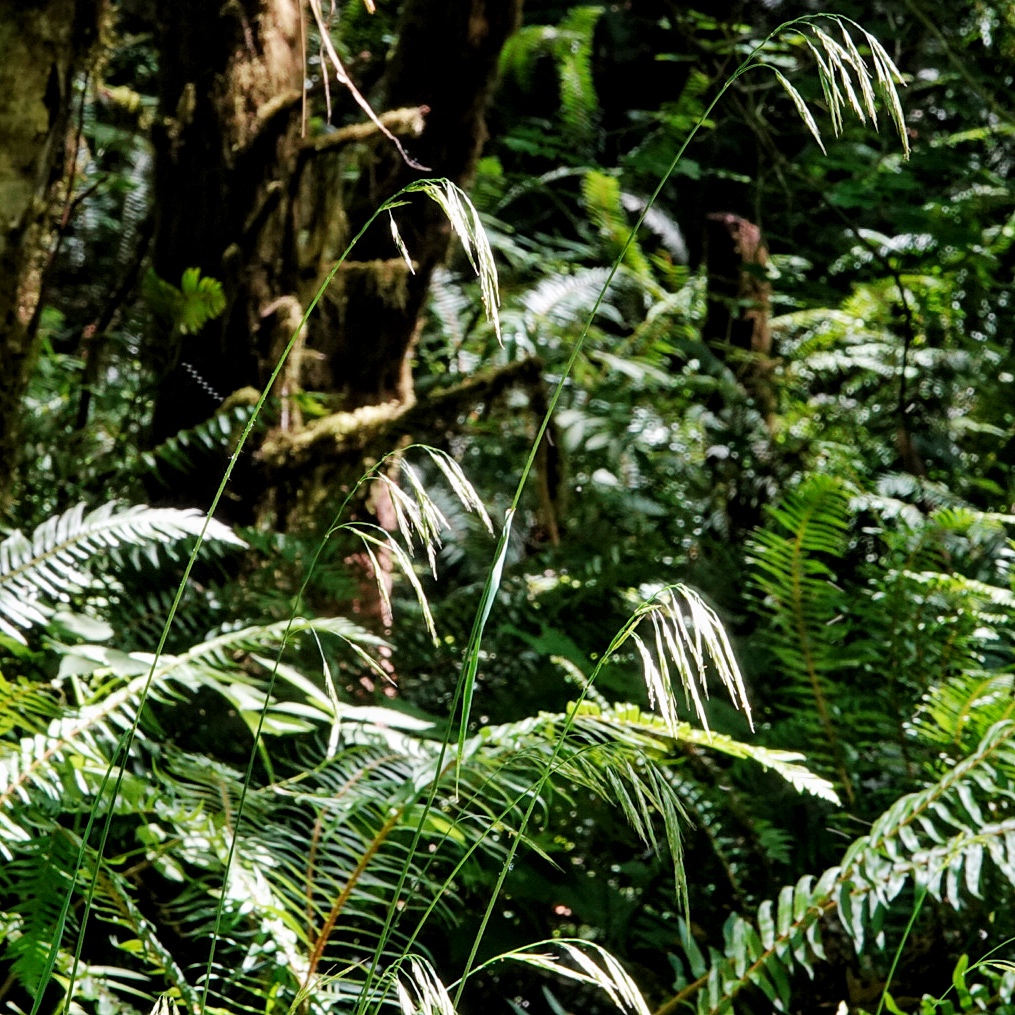
Eaten by-There are a plethora of leaf mining flies (Agromyzidae) that feed on members of this genus, as well as the moth genera Leucania and Cosmopterix, but I can find no larval host information specific to this species. But it is apparently an important forage for elk in the springtime, although it is mostly ignored in summer and fall.
Etymology of names–Bromus is from the Ancient Greek for oats. The specific epithet vulgaris is from Latin, and means common.

http://biology.burke.washington.edu/herbarium/imagecollection/taxon.php?Taxon=Bromus%20vulgaris
https://www.fs.fed.us/database/feis/plants/graminoid/brovul/all.html
http://beta.floranorthamerica.org/Bromus_vulgaris
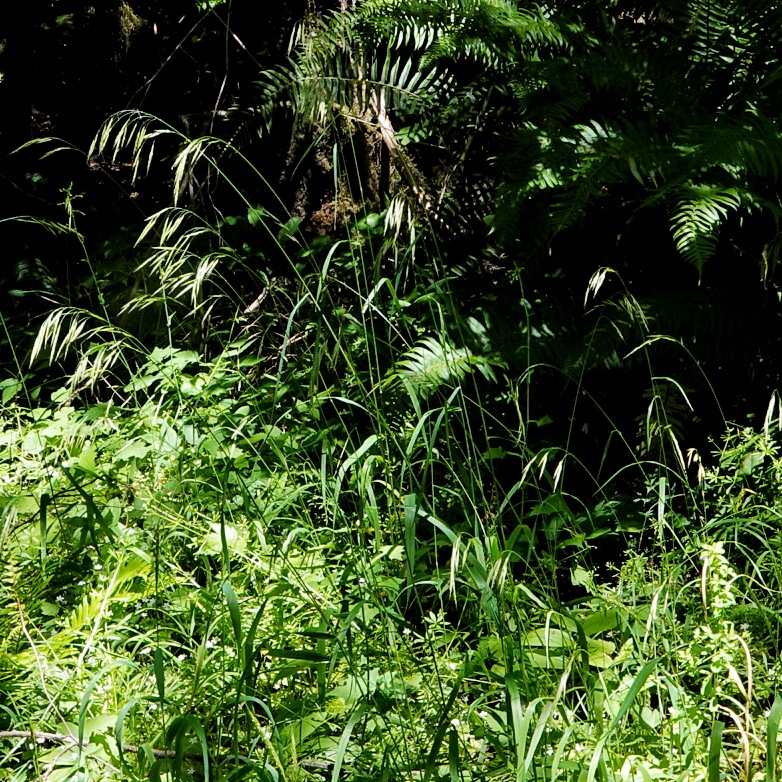
Your persistence is inspiring! Another great profile! Congrats on your second grass ID & still a measure of sanity! 😉
Well, 1/2 of nothing is still nothing😉